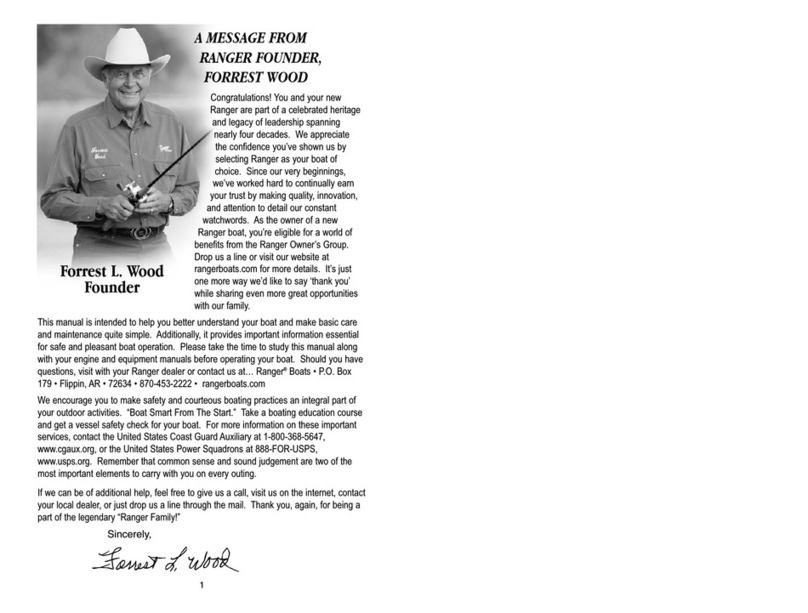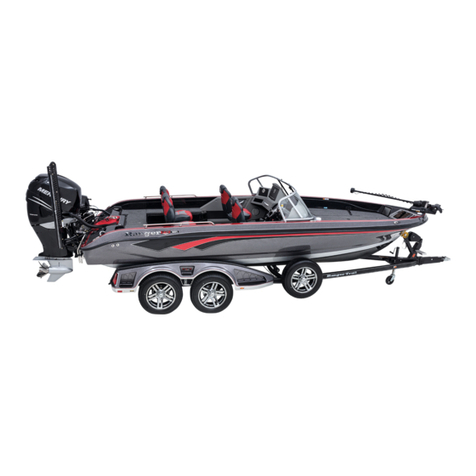8
Getting to Know and Handle Your Ranger Boat ......................................2
Be Responsible for Safer Boating ............................................................6
Carbon Monoxide Warning ......................................................................7
Special Information ..................................................................................9
Your Ranger Dealer’s Responsibilities ................................................9
Owner/Operator’s Responsibilities ....................................................10
Warning and Cautions ........................................................................11
Hazard Labeling ..........................................................................12 - 14
Hull Identification Plate ..........................................................................14
U.S. Coast Guard Capacity Information Plate ........................................15
Recommended On-Plane Seating Locations..........................................16
Gasoline Fuel System ............................................................................17
Your Livewell Aeration System................................................................22
Steering at Console ................................................................................28
Your Boat’s Finish ..................................................................................33
Maintenance and Repair ....................................................................33
Your Power Pedestals ............................................................................35
Key Locks, Carpet, and Upholstery ........................................................37
Cleaning Marine Vinyl .................................................................. 38 & 39
Adding Accessories To Your Boat ..........................................................40
Hook Up of Trolling Motor Leads ............................................................41
Wiring Diagrams ..............................................................................42 - 51
Electrical System ....................................................................................52
Fuse Panel Information ......................................................................52
Fisherman Series................................................................................53
Saltwater Series ................................................................................56
Z Comanche ......................................................................................58
Federal Requirements for Recreational Boats........................................62
Boat Data (Owner’s Information) ............................................................64
YOUR RANGER TRAIL
®TRAILER
General Information and Maintenance ..................................................65
Contained Oil Orbital Lubrication (COOL) Hubs ....................................65
Reporting Safety Defects........................................................................66
Trailer Brakes ..................................................................................67 - 69
RangerTrail Wiring ..................................................................................68
Before Towing Your Ranger Trail Trailer ................................................70
Towing Your Ranger Trail Trailer ............................................................70
Swing Hitch ............................................................................................71
Hitch Class Rating ..................................................................................71
Trailer Exploded View ....................................................................72 & 73
Ranger Trail Parts List ............................................................................74
Limited Warranty ............................................................................75 & 76
TABLE OF CONTENTS






























